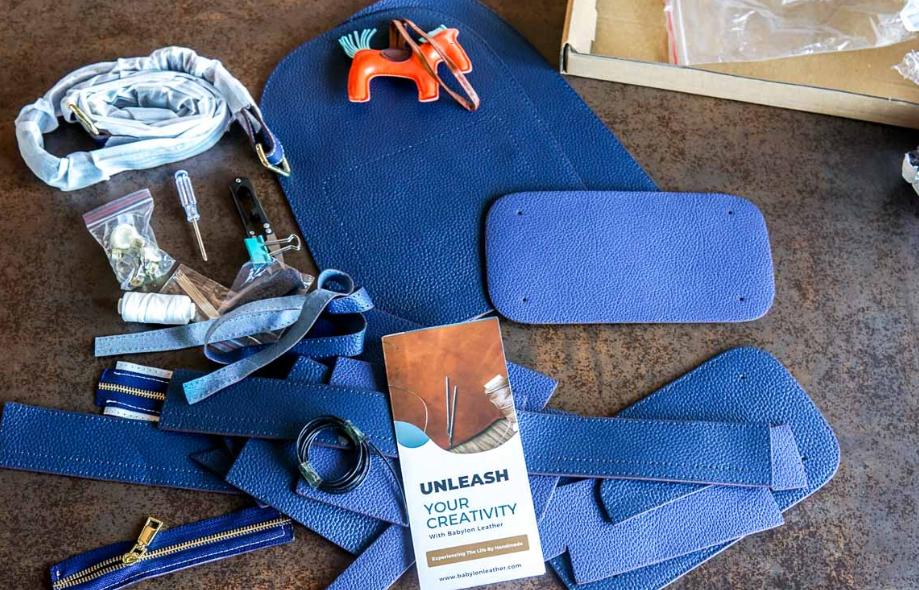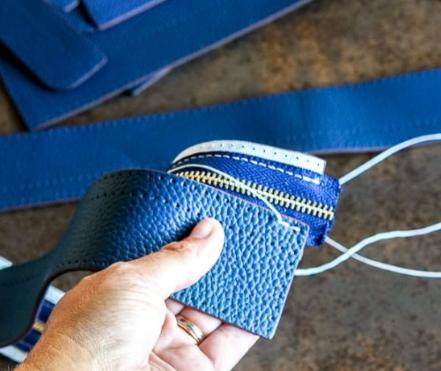Sewing a backpack at home allows you to customize its design, choose your preferred materials, and ensure a high-quality finish. While the process may seem daunting at first, breaking it down into manageable steps makes it achievable even for beginners. The key to a professional-looking backpack lies in careful planning, precise cutting, and methodical sewing. This guide will walk you through each stage, from selecting the right materials to adding the finishing touches, so you can create a backpack that’s not only functional but also stylish. Whether you’re making a backpack for daily use, travel, or as a gift, following these steps will help you achieve a durable and polished result. Let’s dive into the process of how to sew a backpack that meets your needs and showcases your creativity.

What Materials and Tools Are Needed to Sew a Backpack?
To sew a backpack, you’ll need a specific set of materials and tools to ensure durability and a polished finish. Start with heavy-duty fabric like canvas, denim, or nylon, which offers the strength needed for a functional backpack. You’ll also need sturdy thread, preferably polyester, for its strength and resistance to wear. For the lining, consider using lightweight cotton or polyester. Essential tools include a sewing machine capable of handling thick fabrics, sharp fabric scissors, measuring tape, and pins. Additional materials like zippers, buckles, and straps are crucial for functionality. Don’t forget interfacing to reinforce the fabric, especially in areas that will bear weight, like the straps and base. Having all your materials and tools ready before you begin will make the sewing process smoother and more efficient.

How to Cut and Prepare Fabric for Your Backpack
Proper preparation of your fabric is critical to the success of your backpack project. Start by washing and ironing your fabric to pre-shrink it and eliminate any wrinkles, ensuring it’s ready for accurate cutting. Use a large, flat surface for cutting, and measure carefully to avoid mistakes. Lay out your pattern pieces, making sure to align the grain of the fabric with the pattern’s grain line. Pin the pattern pieces to the fabric securely, then use sharp fabric scissors to cut out each piece precisely. Remember to include seam allowances as specified in your pattern. Mark any necessary guidelines on the fabric, such as where to place zippers, pockets, or straps. Taking your time during this step will prevent issues later and contribute to a polished final product.
Step-by-Step Process: How to Sew the Backpack Body and Straps
Step 1: Sewing the Main Body
Begin by sewing the main body of the backpack. Place the two main fabric pieces together, right sides facing each other. Pin along the edges, leaving the top open, and sew with a straight stitch, maintaining a consistent seam allowance. If your fabric frays easily, consider finishing the raw edges with a zigzag stitch or serging them. Turn the sewn piece right side out and press the seams flat. Next, apply interfacing to the interior for added strength and structure. This step ensures that the backpack body holds its shape and can withstand daily use. Your base structure is now ready for the addition of straps and other features.
Step 2: Attaching the Straps
To attach the straps, cut two lengths of webbing or fabric to create sturdy shoulder straps. If using fabric, fold and sew the strips to reinforce them. Position the straps on the back panel of the backpack, making sure they’re evenly spaced and aligned. Pin the straps in place, then sew them securely to the backpack body using a box stitch for extra strength. Additionally, sew a carrying handle at the top of the backpack, between the straps. Ensure all stitching is reinforced, as these areas will bear the most weight and wear. Properly attached straps will not only add functionality but also contribute to the overall durability of your backpack.

Step 3: Sewing the Lining and Assembling
After the main body and straps are prepared, the next step is to sew the lining and assemble the backpack. Start by sewing the lining pieces together, following the same process as for the main body. Leave an opening at the bottom of the lining to turn the backpack right side out later. Insert the lining into the main body, with the right sides facing each other. Align the seams and edges, then pin them in place. Sew around the top edge of the backpack, securing the lining to the main fabric. Once sewn, turn the backpack right side out through the opening in the lining, then sew the opening closed. Press the edges for a crisp, clean finish.
How to Attach Zippers and Add Pockets
Adding zippers and pockets to your backpack enhances its functionality and gives it a professional touch. Begin by attaching the zippers to the main compartment and any additional pockets. To sew a zipper, first, place it face down along the edge of the fabric, ensuring it’s centered. Pin it in place, then use a zipper foot on your sewing machine to stitch close to the teeth. Repeat this process for any other zippers you plan to add. For pockets, decide their placement on the backpack, pin them in place, and sew along the edges. Consider adding interior pockets for better organization. Ensure all pockets are securely stitched to prevent tearing under weight. Properly attached zippers and pockets are key to a functional and polished backpack.
Conclusion
Creating a backpack from scratch not only allows you to customize it to your liking but also ensures a high-quality product that can last for years. By carefully selecting your materials, preparing your fabric, and following a step-by-step sewing process, you can achieve a professional finish that rivals store-bought backpacks. Whether you’re a beginner or an experienced sewist, this guide provides all the essential tips and techniques you need to create a durable, stylish backpack. As you become more confident in your sewing skills, you can experiment with different designs and features to make each backpack unique. With patience and attention to detail, you’ll find the process of how to sew a backpack and the end product something to be proud of.
FAQ
How long does it take to sew a backpack?
The time it takes to sew a backpack can vary depending on your skill level and the complexity of the design. For beginners, it might take several hours to complete, especially if you’re learning new techniques along the way. More experienced sewists might finish a simple backpack in a few hours. Complex designs with multiple pockets, zippers, and intricate details will naturally take longer. It’s important to allocate enough time to work at a comfortable pace, ensuring accuracy and a high-quality finish.
Can I sew a backpack without a sewing machine?
Yes, it’s possible to sew a backpack by hand, but it will take significantly more time and effort compared to using a sewing machine. Hand sewing requires strong, even stitches to ensure the backpack’s durability, especially in areas like the straps and seams. While hand sewing can be a satisfying process, a sewing machine is recommended for its speed and the strength of the stitches it produces, particularly when working with heavy-duty fabrics.
What type of fabric is best for sewing a backpack?
The best fabric for sewing a backpack is typically a durable, heavy-duty material like canvas, denim, or nylon. These fabrics offer the strength needed to support the weight of the contents and withstand daily use. Additionally, they provide a professional appearance and can be treated to resist water and stains, adding to the backpack’s functionality. When choosing fabric, consider the intended use of the backpack and select a material that matches those needs.

0 Comments